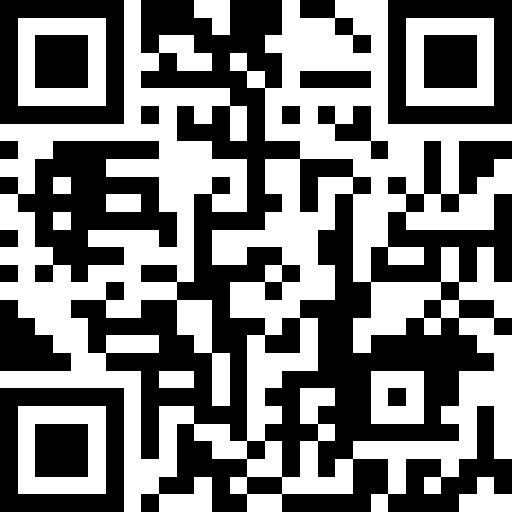Title Page
-
Audit date :
-
Audit reference :
-
Auditor :
-
Auditee :
Mandatory Audit Questions
-
Are procedures being audited meeting the requirements of the where applicable e.g., ISO 9001:2015 and customer-specific codes of practise?
-
Are documents accessible and readily available on the master register?
-
Are documents in use the correct revisions?
-
Have the relevant staff been trained on these documents?
-
Are training records up-to-date with the current documents?
-
Previous Audit Reviewed?
-
Any NC Raised in Previous Audit Closed?
Audit Specific Questions
-
Has the organization identified which resources it needs to make available in order to ensure the effective operation of your QMS including raw materials, infrastructure, finance, personnel and IT
-
Evidence :
-
Has the organization considered the need for external resources in addition to the need for internal resources.
-
Evidence :
-
Does the management review minutes include evidence of resource allocation.
-
Evidence :
-
How are resource requirements reviewed – Identify staffing needs versus headcount HR
-
Evidence :
-
Are competencies required for each position defined
-
Evidence :
-
Are job descriptions appropriate
-
Evidence :
-
Has the organisation outlined the recruitment and selection process
-
Evidence :
-
The organisation identified initial training requirements
-
Evidence :
-
Are training files developed for each employee, including management identifying and tracking employee training requirements
-
Evidence :
-
Does the organisation verify that the personnel have received the planned training
-
Evidence :
-
Has the organization determined, provided, and maintained the infrastructure for the operation of processes to achieve product and service conformity – building, tools, equipment, utilities, IT etc
-
Evidence :
-
Does the organisation managed & control work environments required to achieve product conformity
-
Evidence :
-
Has the organisation determined the continued improvement of the facility through informal or formal review meetings
-
Evidence :
-
Is there good lighting, ventilation, safe passageways, stairs and corridors
-
Evidence :
-
Are working equipment, tools and process maintained
-
Evidence :
-
Are safe methods of work in place – observe
-
Evidence :
-
Has the organisation provided safe means for handling, storage, use and transportation of equipment, materials and chemicals
-
Evidence :
-
Has Top management provided the leadership & direction for establishing strategies to use organizational knowledge and policies and objectives
-
Evidence :
-
Has the organization identified the scope of organizational knowledge relevant to its business and related risks and opportunities associated with each type of organizational knowledge
-
Evidence :
-
Has the organization defined the process needed to manage organizational knowledge - identify, obtain, accumulate, store, communicate, use, maintain, protect and evaluate the performance of organizational knowledge management against objectives
-
Evidence :
-
Has the organization defined roles, authority and responsibilities for organizational knowledge process activities
-
Evidence :
-
Has the organization determined competency requirements and provided appropriate training and awareness for all employees using organizational knowledge
-
Evidence :
-
Has the organization established processes for communication, participation and consultation
-
Evidence :
-
Has the organization determined the nature and extent of documentation required to manage organizational knowledge
-
Evidence :
-
Has the organization identified any applicable regulatory and other requirements
-
Evidence :
-
Has the organization defined & implemented an organizational knowledge change management process?
-
Evidence :
-
Has the organization performed organizational knowledge activities – assign responsibilities, identify, obtain, accumulate, store, maintain, protect, communicate, use and evaluate the performance of organizational knowledge?
-
Evidence :
-
Has the organization tracked organizational knowledge performance measures?
-
Evidence :
-
Does the organization investigate loss, irretrievability or theft of organizational knowledge
-
Evidence :
-
Has the organization evaluated compliance to applicable regulatory requirements
-
Evidence :
-
Has the organization maintained appropriate records of organizational knowledge management activities
-
Evidence :
-
Has the organization verified achievement of organizational knowledge goals and objectives
-
Evidence :
-
Is there a documented list of equipment & its location
-
Evidence :
-
Are devices identified in such a way that the user can determine that the device has current calibration; i.e marked in accordance with calibration requirements
-
Evidence :
-
Are devices calibrated at a pre-determined intervals or prior to use
-
Evidence :
-
Are devices calibrated by external providers certified to ISO 17025
-
Evidence :
-
Are devices calibrated to a defined method, traceable to a national or international standard [where there is no standard available for the device the basis for calibration or verification must be recorded]
-
Evidence :
-
Are records of calibration maintained – sample check
-
Evidence :
-
Are records of verification maintained – sample check
-
Evidence :
-
Are devices safeguarded from adjustment, which may invalidate results
-
Evidence :
-
Are devices protected from misuse & handled and stored in a manner to protect the equipment from damage through design or the training of staff
-
Evidence :
-
Are procedures in place to record actions to be taken when the prescribed devices are found not to be operating within specified limit
-
Evidence :
-
Equipment found to be out of calibration are adjusted/re-adjusted by qualified personnel
-
Evidence :
-
Computer software which is used for monitoring/measuring is validated prior to initial use;
-
Evidence :
-
Computer software used for monitoring and measuring is re-validated where necessary
-
Evidence :
-
Has the organization summarised major training initiatives and activities planned for the given budget year?
-
Evidence :
-
Have employee training needs been identified? Including existing workers, new hires, temporary workers and outside contractors?
-
Evidence :
-
Are training plans developed, implemented? Have competency-based training needs been identified - Review training plans for selection
-
Evidence :
-
Are training plans reviewed regularly to ensure that they are up to date and meet current demands.
-
Evidence :
-
Is training scheduled and prioritized according to the needs of the work area
-
Evidence :
-
Where established has training been undertaken before commencement of work
-
Evidence :
-
Are training requirements for employees assessed against wider organizational policies and objectives.
-
Evidence :
-
Are abilities and competencies of workers monitored?
-
Evidence :
-
Are training needs determined during the appraisals process?
-
Evidence :
-
Are suitable training matrices produced for each workplace?
-
Evidence :
-
Are legislative requirements, including license requirements or management system requirements identified e.g. IFS training needs
-
Evidence :
-
Is Employee training and re-training recorded, monitored and kept up to date by their Line Manager and Supervisor
-
Evidence :
-
Is a training register containing information on specified levels of education, training, and experience established for each employee whose work is involved with any significant impact and safety hazard
-
Evidence :
-
Does training material emphasize responsibility for minimizing significant impacts and risks associated with their work
-
Evidence :
-
Does training material identify potential consequences of departures from specified operating procedures & address the benefits of improved personal performance
-
Evidence :
-
How is competency evaluated or demonstrated e.g., through tests, observations, results
-
Evidence :
-
Is the person performing the activity able to demonstrate his or her competencies?
-
Evidence :
-
If the person is found not to be competent, how does the organisation take action to raise competence to the required level
-
Evidence :
-
Is on-the-job training provided by a more experienced employee or by an external trainer, skilled in the requirements of that particular activity as indicated by their training record
-
Evidence :
-
Are training plans updated on a regular basis by the Line Manager to reflect the training status
-
Evidence :
-
Are employees encouraged to request further training to aid their personal development
-
Evidence :
-
Has the organisation considered its future needs?
-
Evidence :
-
Do employees understand the importance of conformance with the quality policy and the management system procedures and requirements
-
Evidence :
-
Is awareness training undertaken [broad-based training provided to increase employee awareness]
-
Evidence :
-
Does awareness training material include key elements of the management system
-
Evidence :
-
Does awareness training material include the importance of compliance with operational and regulatory requirements
-
Evidence :
-
Does awareness training material include the overall improvement aims of the management system
-
Evidence :
-
Does awareness training material include the importance to interested parties
-
Evidence :
-
Are records of attendance at awareness training available
-
Evidence :
-
Do employees understand their role for minimizing significant impacts and risks associated with their work
-
Evidence :
-
Are procedures established to make employees aware of the benefits of personal performance
-
Evidence :
-
Are procedures established to make employees aware of their roles and responsibilities in achieving conformance with policies and procedures
-
Evidence :
-
Are procedures established to make employees aware of the benefits of the potential consequences of departure from specified operating procedures
-
Evidence :
-
Do all new recruits (workers, contractors and temporary staff) receive induction training or briefings
-
Evidence :
-
Does training programmes including Tricel core values and policies, company overview & history, the people and structure, contract of employment, induction pack, health, safety and environmental briefing
-
Evidence :
-
Are induction records completed, signed by each participant & retained – sample check
-
Evidence :
-
Where tool-box-talks are used for general awareness training is there an attendance list completed & signed by each participant
-
Evidence :
-
Is the person providing the tool box talk documented on the records.
-
Evidence :
-
Has the organization identified the necessary internal and external communications that are required for the operation of the management system
-
Evidence :
-
Has the organisation identified when & how communications will occur?
-
Evidence :
-
Your organisation needs to ensure that procedures to control internal and external communications and interfaces are in place include enforcement authorities, lawyers/solicitors, insurance companies
-
Evidence :
-
Do all documents have identification?
-
Evidence :
-
Do all documents have an appropriate format? Date, title, revision number etc
-
Evidence :
-
Have all documentation been reviewed and approved?
-
Evidence :
-
Are all documents in the correct place?
-
Evidence :
-
Is all documented information protected from tampering, unauthorized changes, and damage?
-
Evidence :
-
Is documented information available in the correct language?
-
Evidence :
-
Are employees able to access all documentation easily?
-
Evidence :
-
Has the organisation specified where all documentation is located?
-
Evidence :
-
Is the organization able to ensure that the correct versions of documented information are available?
-
Evidence :
-
How long does the organisation retain documentation? Does the retention period meet customer and regulatory requirements
-
Evidence :
-
Does the documented information guide the production of products provided by the organization?
-
Evidence :
-
Is documented information of external origin used for the development of the QMS controlled – standards available, of the correct version
-
Evidence :
-
Are records legible, completed in real time & in good condition?
-
Evidence :
-
Are any alterations to records authorised & recorded?
-
Evidence :
-
Are records appropriately verified [include signature of operator or supervisor verifying records]
-
Evidence :
-
Are records maintained & retrievable?
-
Evidence :
-
Are records completed in a manner that accurately transmits the intended information
-
Evidence :
-
Where records are in electronic form are these suitably backed up?
-
Evidence :
-
Are electronic records controlled? e.g., Security policy, password rules, storage and back-up policy including protection from loss, corruption, physical damage
-
Evidence :
-
Are authorisation levels for amending electronic documents defined to prevent unauthorized changes, unintended alteration?
-
Evidence :
-
Does the organisation test electronic retrieval systems & are records of tests retained?
-
Evidence :
-
PN111 - 6) Does the organisation hold and update a register of "Critical Components"?
-
Evidence :
-
PN111-6) Does the organisation maintain a master list that details all QMS documents?
-
Evidence :
Opportunity For Improvement
-
Number of OFI raised :
-
Details
-
Have the OFI details been added to HubSpot
Non-conformance
-
Number of Non-conformances raised :
-
Details
-
Have the Non-conformance details been added to HubSpot











